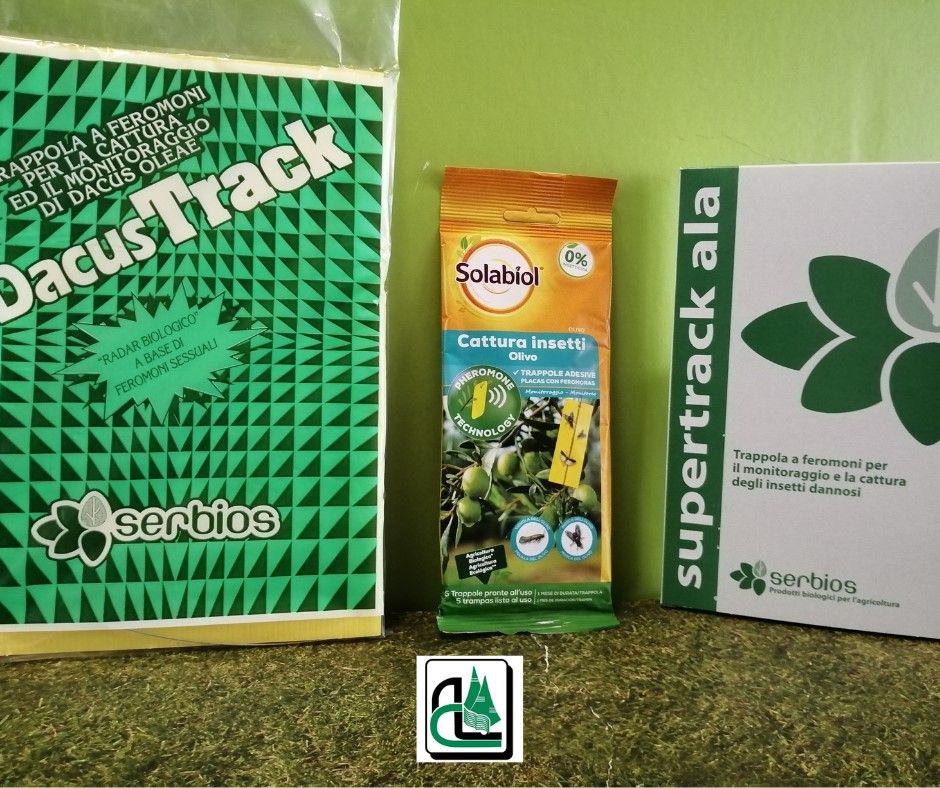PRODUCT OF THE MONTH AUGUST 2021 - DACUS TRACK

DACUS TRACK TO COMBAT OLIVE FLY
The olive fly is considered the most serious adversity for the olive tree. In fact it is able to ruin the harvest and, consequently, the size and quality of oil production. The females lay their eggs from late summer, when the olive has at least a diameter of 7-8 mm. The damage caused by the olive fly is of two types: quantitative and qualitative. In quantitative terms, the damage is caused by larvae of II age and, above all, of III age and consists in the subtraction of a considerable part of the pulp with a consequent reduction in the oil yield.. In terms of quality, we must consider the significant deterioration in the quality of the oil extracted from olives with a high percentage of attacks. The oil obtained from buggy olives has a marked acidity and a lower shelf life.
Biological or integrated control is applied with: • Monitoring traps (trap-test): used to detect population trends in order to estimate the intervention threshold. • Mass trap (mass trap): used to capture adults en masse in order to knock down the population to levels that keep infestations below the threshold of intervention. Their density must be high (one trap per plant with sexual and/or food attractions). The attractants used for the traps are of three types: • Color. It is the attractiveness used in chromotropic traps. The adults of the olive fly are attracted by the yellow color. • Pheromone. is a reproduction of the main component of natural sexual pheromone. • Food Attractions. They are volatile nitrogen substances that attract flies looking for protein supplements in their diet.
Products such as the Dacus track or the Super Track Ala are yellow chromtropic panel traps triggered with pheromone


